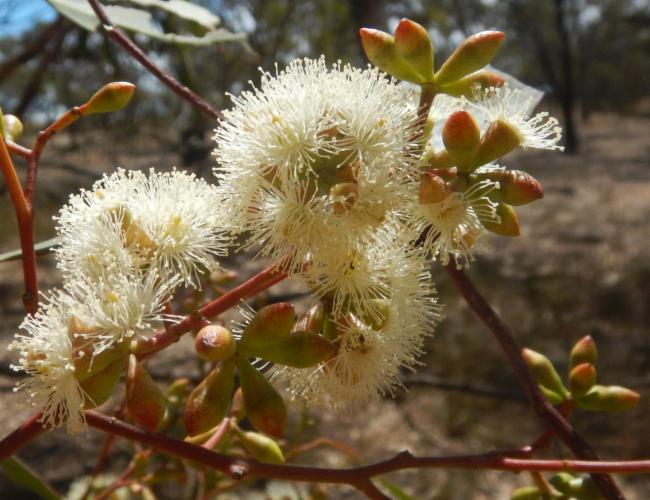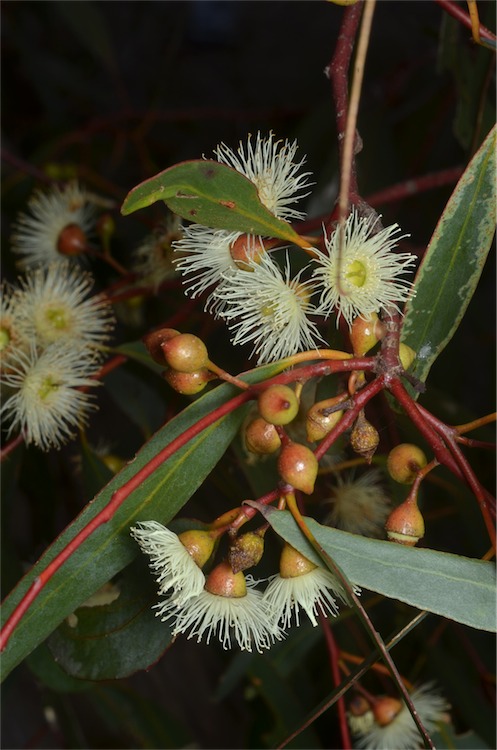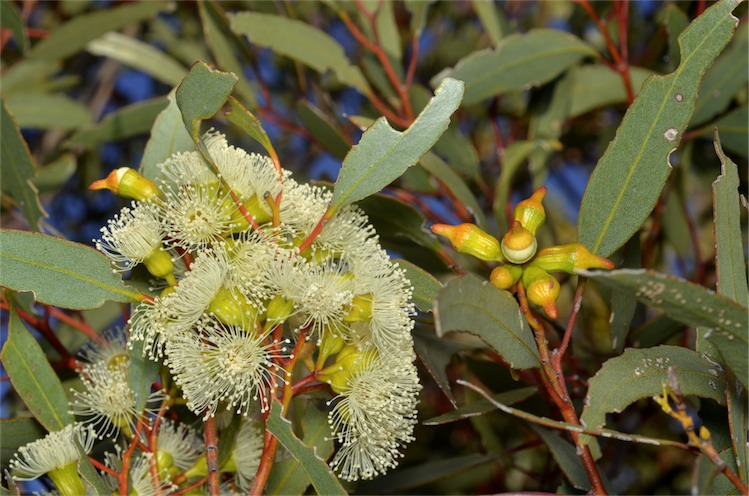|
Acacia Glandulicarpa
''Acacia glandulicarpa'', commonly known as the hairy-pod wattle, is a perennial shrub belonging to the genus '' Acacia'' and the subgenus ''Phyllodinea'' that is native to parts of south eastern Australia. The shrub typically grows to a height of and has a dense and spreading habit. The shrub has a scattered distribution from the Burra Gorge and Bordertown area in South Australia, through to the Little Desert and Dimboola in Victoria where it is found on rocky hills as a part of scrub or ''Eucalyptus'' woodland communities. Description The hairy-pod wattle is a dense, rounded, spreading, branched shrub 1-2m high. Foliage is dull olive-green foliage, with grey-brown, pubescent branches and small raised leaf bases along the stems. Small phyllodes, 5–12 mm long by 3–6 mm broad, with wavy outer margin, one main vein and a secondary one, branchlets minutely hairy, stipules absent. Flowering between July – October, inflorescence are simple and axillary, eithe ... [...More Info...] [...Related Items...] OR: [Wikipedia] [Google] [Baidu] |
Felix Reader
Felix Maximilian Reader (1850–1911) was a German-born Australian chemist and amateur botanist. Born in Berlin, he trained as a chemist before emigrating to New Zealand, then shortly afterwards, in the 1880s, to Australia. In the 1890s he settled at Dimboola, Victoria, where he had a chemist's shop until the early 1900s. He was an enthusiastic botanist, publishing many papers in the ''Victorian Naturalist'', establishing himself as an expert on the grasses of the southern Wimmera, and collecting the type specimen of ''Acacia glandulicarpa''. He also amassed a large private herbarium, which he sold to the National Herbarium of Victoria The National Herbarium of Victoria ( Index Herbariorum code: MEL) is one of Australia's earliest herbaria and the oldest scientific institution in Victoria. Its 1.5 million specimens of preserved plants, fungi and algae—collectively known a ... in 1906. '' Brachycome readeri'' and '' Pottia readeri'' are named in his honour. References ... [...More Info...] [...Related Items...] OR: [Wikipedia] [Google] [Baidu] |
Acacia Daviesii
''Acacia daviesii'', commonly known as tabletop wattle, is a shrub belonging to the genus ''Acacia'' and the subgenus ''Phyllodineae'' that is native to Victoria. Description The root-suckering shrub typically grows to a height of around and has erect stems and pendulous branchlets. Taxonomy The species was first formally described by the botanist Marisa Bartolome as part of the work ''A new, rare species of Acacia from north-eastern Victoria'' as published in the journal '' Australian Systematic Botany''. It was reclassified as ''Racosperma daviesii'' by Leslie Pedley in 2003 then transferred back to the genus ''Acacia'' in 2006. Distribution The shrub is endemic to a small area in central Victoria and is only found at a few of sites to the south east of Mansfield around the Howqua River and Mount Timbertop where it can form dense stands. It is often part of dry open ''Eucalyptus'' woodland communities. See also * List of Acacia species Several Cladistics, cladistic ana ... [...More Info...] [...Related Items...] OR: [Wikipedia] [Google] [Baidu] |
Dodonaea Viscosa
''Dodonaea viscosa'', also known as the broadleaf hopbush, is a species of flowering plant in the ''Dodonaea'' (hopbush) genus that has a cosmopolitan distribution in Tropics, tropical, Subtropics, subtropical and warm temperate regions of Africa, the Americas, southern Asia and Australasia. ''Dodonaea'' is part of Sapindaceae, the soapberry family. This species is notable for its extremely wide distribution, which it achieved only over the last 2 million years (from its region of origin in Australia) via oceanic dispersal. Harrington and Gadek (2009) referred to ''D. viscosa'' as having "a distribution equal to some world’s greatest transoceanic dispersers". Common names The common name hopbush is used for ''D. viscosa'' specifically and also for the genus as a whole. In the south Indian state of Tamil Nadu, this plant is called ''virāli'' (விராலி). Australian common names include: broad leaf hopbush, candlewood, giant hopbush, narrow leaf hopbush, sticky hopbus ... [...More Info...] [...Related Items...] OR: [Wikipedia] [Google] [Baidu] |
Allocasuarina Luehmannii
''Allocasuarina luehmannii'' (buloke or bull-oak) is a species of ironwood tree native to Australia and its wood is the hardest commercially available as measured by the Janka Hardness Scale. Description The evergreen tree typically grows to a height of and usually produces a clear trunk. It is moderately to long-lived, usually over 15 years with a moderate growth rate. It is dioecious with male and female flowers on separate plants, which flowers in spring. It is cited as having the hardest wood in the world, with a Janka hardness of 22,500 N (5,060 lbf). HoweverThe Wood Databasegives it a Janka hardness of only 16,600 N (3,760 lbf):"Australian buloke is commonly reported as the hardest wood in the world. This is based upon a single data source and may not give the best representation of all testing and data available. Consequently, with as many data points taken into consideration as possible, Australian buloke ranks at #21 overall on the poster World ... [...More Info...] [...Related Items...] OR: [Wikipedia] [Google] [Baidu] |
Eucalyptus Microcarpa
''Eucalyptus microcarpa'', commonly known as grey box, is a species of tree that is endemic to southeastern continental Australia. It has rough, fibrous or flaky bark on the trunk, smooth whitish bark above, lance-shaped adult leaves, flower buds in groups of between seven and eleven, white flowers and oval, cylindrical or urn-shaped fruit. Description ''Eucalyptus microcarpa'' is a spreading tree, sometimes with several trunks, that typically grows to a height of and forms a lignotuber. It has rough, fibrous or flaky bark on the trunk as far as the larger branches, smooth greyish or whitish bark above. Young plants and coppice regrowth have dull green to bluish leaves long and wide and petiolate. Adult leaves are the same shade of green on both sides, lance-shaped, long and wide on a petiole long. The flower buds are arranged on a branched peduncle, in groups of between seven and eleven, the peduncle long, the individual buds on pedicels long. Mature buds are oval to ... [...More Info...] [...Related Items...] OR: [Wikipedia] [Google] [Baidu] |
Eucalyptus Leucoxylon
''Eucalyptus leucoxylon'', commonly known as yellow gum, blue gum or white ironbark, is a species of small to medium-sized tree that is endemic to south-eastern continental Australia. It has smooth yellowish bark with some rough bark near the base, lance-shaped or curved adult leaves, flower buds in groups of three and cylindrical, barrel-shaped or shortened spherical fruit. A widely cultivated species, it has white, red or pink flowers. Description ''Eucalyptus leucoxylon'' is a tree that typically grows to a height of and forms a lignotuber. It has smooth white, yellow or bluish-grey bark, usually with of rough fibrous to flaky bark the base of the trunk. Young plants and coppice regrowth have leaves mostly arranged in opposite pairs, egg-shaped to broadly lance-shaped, long and wide. Adult leaves are arranged alternately, the same slightly glossy shade of green on both sides, lance-shaped to curved, long and wide, tapering to a petiole long. The flower buds are arranged ... [...More Info...] [...Related Items...] OR: [Wikipedia] [Google] [Baidu] |
Eucalyptus Behriana
''Eucalyptus behriana'', commonly known as bull mallee and broad-leaved box, is a species of mallee or small tree that is endemic to south-eastern Australia. It has rough, fibrous bark on the lower part of the trunk and smooth bark above, broadly lance-shaped adult leaves, flower buds in groups of seven, white flowers and cup-shaped or barrel-shaped fruit. Description ''Eucalyptus behriana'' is a tree or a mallee that typically grows to a height of and forms a lignotuber. It has rough, fibrous, dark brown to black bark on the base of the trunk and smooth greyish, greenish or coppery bark on the upper trunk and branches. Leaves on young plants and on coppice regrowth are arranged alternately, egg-shaped, long, wide and have a petiole. The adult leaves are arranged alternately, broadly lance-shaped to egg-shaped, long, wide on a petiole long, and the same glossy green on both sides. The flower buds are arranged in groups of seven, mostly on the ends of the branches on a ... [...More Info...] [...Related Items...] OR: [Wikipedia] [Google] [Baidu] |
Eucalyptus Viridis
''Eucalyptus viridis'', commonly known as the green mallee, is a species of mallee or small tree that is endemic to south-eastern, continental Australia. It has rough fibrous or flaky bark on the lower trunk, smooth bark above, linear to narrow lance-shaped adult leaves, flower buds in groups of seven or nine, white flowers and cup-shaped fruit. Description ''Eucalyptus viridis'' is a mallee or small tree that typically grows to a height of and forms a lignotuber. It has rough, dark grey, fibrous or flaky bark on the lower stems, smooth greyish brown above, or sometimes entirely smooth bark. Yount plants and coppice regrowth have linear to narrow lance-shaped or narrow elliptical leaves that are long and wide. Adult leaves are glossy green, narrow linear to narrow lance-shaped, curved or narrow elliptical leaves that are long and wide, tapering to a petiole up to long. The flower buds are arranged on the ends of branchlets in groups of seven or nine on an branched peduncl ... [...More Info...] [...Related Items...] OR: [Wikipedia] [Google] [Baidu] |
Eucalyptus Dumosa
''Eucalyptus dumosa'', commonly known as the white mallee, dumosa mallee, or Congoo mallee, is a species of mallee that is endemic to south eastern Australia. It usually has rough, flaky grey bark on the lower trunk, smooth bark above, lance-shaped to curved adult leaves, flower buds in groups of seven, white flowers and cup-shaped, cylindrical or barrel-shaped fruit. Description ''Eucalyptus dumosa'' is a mallee that typically grows to a height of , occasionally and a width of with an open, bushy, spreading habit. It usually has rough, flaky or fibrous greyish bark on the base of the trunk, smooth, whitish or yellow-white, weathering to grey or pinkish-grey bark above. The bark sheds in long thin ribbons. Young plants and coppice regrowth have petiolate, egg-shaped to broadly lance-shaped leaves that are long and wide. Adult leaves are the same dull bluish green to greyish green on both sides, lance-shaped to curved, long and wide on a petiole long. The flower buds are a ... [...More Info...] [...Related Items...] OR: [Wikipedia] [Google] [Baidu] |
Eucalyptus Incrassata
''Eucalyptus incrassata'', commonly known as the lerp mallee, yellow mallee, ridge fruited mallee or rib fruited mallee, is a species of mallee that is endemic to southern Australia. It has smooth bark, sometimes with rough, ribbony bark near the base, lance-shaped adult leaves, flower buds in groups of seven, creamy white, pale yellow, sometimes pink or red flowers, and cylindrical, barrel-shaped or bell-shaped fruit. Description ''Eucalyptus incrassata'' is a single stemmed or multi-stemmed mallee that typically grows to a height of but can reach as high as . It will usually grow to a width of and it forms a lignotuber. The bark is smooth pink to grey or brownish, sometimes with rough grey to brown ribbons near the base. Young plants and coppice regrowth have dull bluish green, elliptic to egg-shaped leaves that are long and wide. The adult leaves are arranged alternately, the same glossy green on both sides, lance-shaped, long and wide on a petiole long. The flower b ... [...More Info...] [...Related Items...] OR: [Wikipedia] [Google] [Baidu] |
Nhill
Nhill is a town in the Wimmera, in western Victoria (Australia), Victoria, Australia. Nhill is located on the Western Highway, Victoria, Western Highway, halfway between Adelaide and Melbourne. At the , Nhill had a population of 1,749. "Nhill" is believed to be a Wergaia word meaning "early morning mist rising over water" or "white mist rising from the water".''The Horsham Times'', "The discovery of Nhill", 2 June 1944, p. 4. Nhill is the administrative headquarters for Shire of Hindmarsh and residents are mainly employed in either farming or food processing, most notably in grain and fowl. The town is home to a community of Karen people, the first of whom came to Australia as refugees, and who settled in Nhill in the early 2010s to work at the Luv-a-Duck food processing facility. In 2012, there were over 100 Karen residents in Nhill. History The formally recognised traditional owners for the area in which Nhill sits are the Wotjobaluk, Jaadwa, Jadawadjali, Wergaia and Jupagik ... [...More Info...] [...Related Items...] OR: [Wikipedia] [Google] [Baidu] |
Horsham, Victoria
Horsham () is a regional city in the Wimmera region of western Victoria, Australia. Located on a bend in the Wimmera River, Horsham is approximately northwest of the state capital Melbourne. As of the 2021 Census, Horsham had a population of 20,429. It is the most populous city in Wimmera, and the main administrative centre for the Rural City of Horsham local government area. It is the eleventh largest city in Victoria after Melbourne, Geelong, Ballarat, Bendigo, Wodonga, Mildura, Shepparton, Warrnambool, Traralgon, and Wangaratta. An early settler James Monckton Darlot named the settlement after the town of Horsham in his native England. It grew throughout the latter 19th and early 20th centuries as a centre of Western Victoria's wheat and wool industry, becoming the largest city in the Wimmera and Western Victoria by the early 1910s. Horsham was declared a city in 1949 and was named Australia's Tidiest Town in 2001 and Victoria's Tidiest Town in 2021. History Pre-colo ... [...More Info...] [...Related Items...] OR: [Wikipedia] [Google] [Baidu] |






.jpg)

